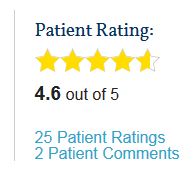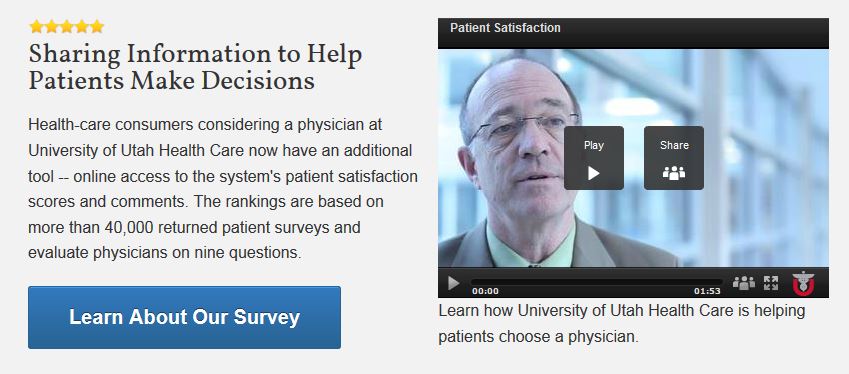Providers Proactively Promote their own Physician Ratings Online


Third-party sites are becoming famous – well, infamous – for publishing physician ratings online. And more and more, consumers are turning to the ratings for help with choosing their healthcare providers. For hospitals and doctors, however, these sites can be highly frustrating. Mostly unregulated and undocumented, comments and rankings on third-party sites can be more inflammatory than they are credible. But when consumers search online for physicians, the third-party sites often sit at the top of search results where they get a lot of attention.
University of Utah Health Care decided to take matters into its own hands. It combats third-party sites by highlighting its own physician reviews on its website and publishing “patient ratings” on every online doctor profile (find an example here). To fuel the initiative, it utilizes patient satisfaction data it was already gathering. And according to Kaiser Health News, “Now, when potential patients use online search engines to look for a University of Utah Health Care doctor, the hospital’s reviews pop up first.”
decided to take matters into its own hands. It combats third-party sites by highlighting its own physician reviews on its website and publishing “patient ratings” on every online doctor profile (find an example here). To fuel the initiative, it utilizes patient satisfaction data it was already gathering. And according to Kaiser Health News, “Now, when potential patients use online search engines to look for a University of Utah Health Care doctor, the hospital’s reviews pop up first.”
In addition, University of Utah Health Care posts information about the survey, including the hospital’s partnership with an independent research company, a sample survey, who receives the survey and what results are posted (“not comments that are libelous, slanderous, profane or risk the privacy of patients”). According to the site, University of Utah Health Care has collected over 40,000 patient surveys, and “99.5 percent of all physician comments received in the last year have been posted unedited.”

It’s precisely the kind of proactive content marketing approach Media Logic likes to see. In fact, leading the way for consumers who are overwhelmed and confused is one of the best ways to earn consumer trust and brand loyalty.
As reported last month in The Washington Post (“Price transparency stinks in healthcare”), the industry needs to “step up” to meet the needs of consumers. Talking specifically about price transparency, a stakeholder group of hospitals, consumer advocates, doctors and health systems recommends providing patients with everything from total estimated price and anticipated out-of-pocket costs to “patient safety scores and clinical outcomes.”
As consumers consider both affordability and quality of care, providers that package data so that it’s accessible and usable (like University of Utah Health Care has done) will be positioned to challenge not only third-party sources but also direct competitors in the marketplace.






